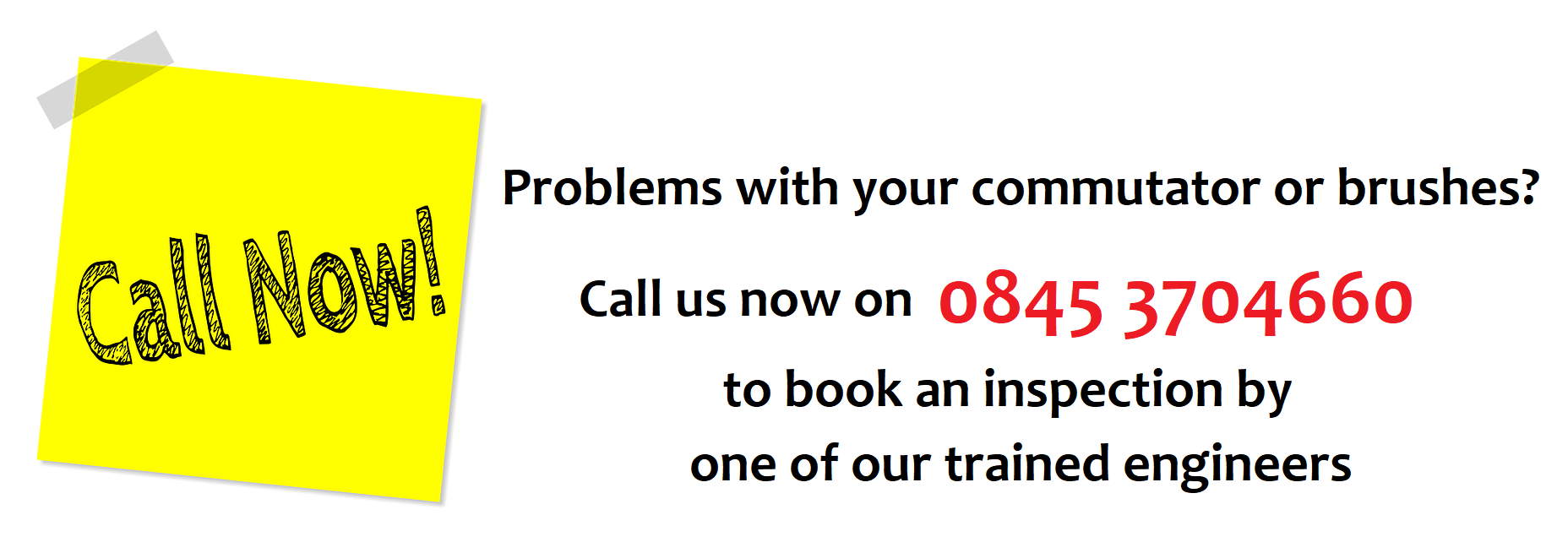Many common problems with commutator brushes are the result of either the wrong brush grade or an incorrect brush spring tension.
Commutator Brush spring tension
Insufficient commutator brush spring tension generates excess heat and increases the resistance across the brush commutator connection. This situation however is easy to both measure and correct.
Using a spring scale, attach it to the brush shunts and pull, when the brush starts to lift, gently release the pressure until the brush starts moving back down. The spring tension at this point is indicated on your spring scale.
The second step is to calculate the brush pressure. Firstly calculate the square area of the brush by multiplying the thickness of a single brush by its width. In general most applications use a brush pressure of between 4 and 6 psi, if its a traction motor with its higher vibration levels, then this can be increased to between 6 and 8 psi.
Commutator Brush grade and current density
Carbon brush grades are only designed to carry a specific current. If you increase the current density then you increase the temperature at which the carbon brushes operate. If your current density is too low then you get rapid brush wear. Taken to extreme, this can mean that your brushes could either dust or wear out in days. By measuring the cross sectional area of the brush surface you can calculate the current density. If you view the brushes as a collection of series-parallel conductors, then half of them constitute a parallel path for the current on the armature, sharing the total armature current. Importantly base all your calculations on the actual current in use, not the current indicated on the nameplate.
The simplest way of increasing the brush density is to remove half of the brushes from the motor. If you do this you must remove the same brush position from each brush holder row. In applications where the load varies frequently, you should discuss the loading range with the brush supplier.
Electrical Balance
Brushes of course play a very important role in keeping the machine electrically balanced. Negative polarity brushes will deposit material on the commutator, and their positive polarity counterparts will remove material. In order too maintain this balance, you must keep the number of positive and negative brushes in each circumferential brush path equal. It's also important to keep spares readily available as your DC motor performance will be negatively impacted if you mix the grades..
Like all mechanical things, if you monitor the condition of your DC motor, then identify and resolve issues during regular maintenance inspections, saving both money and time. As any plant engineer will tell you, it's easier to change brush springs than it is to replace the motor.


Drives and Automation Ltd are a ‘one-stop’ independent shop for a full range of industrial automation products and system integration services. We provide drive modules, motors, control systems and PLC / SCADA solutions. Independent advice is provided on the most suited product by application. In addition we offer a variety of drive accessories. We are the UK agent for the Sicme Motori range of AC and DC motors.
